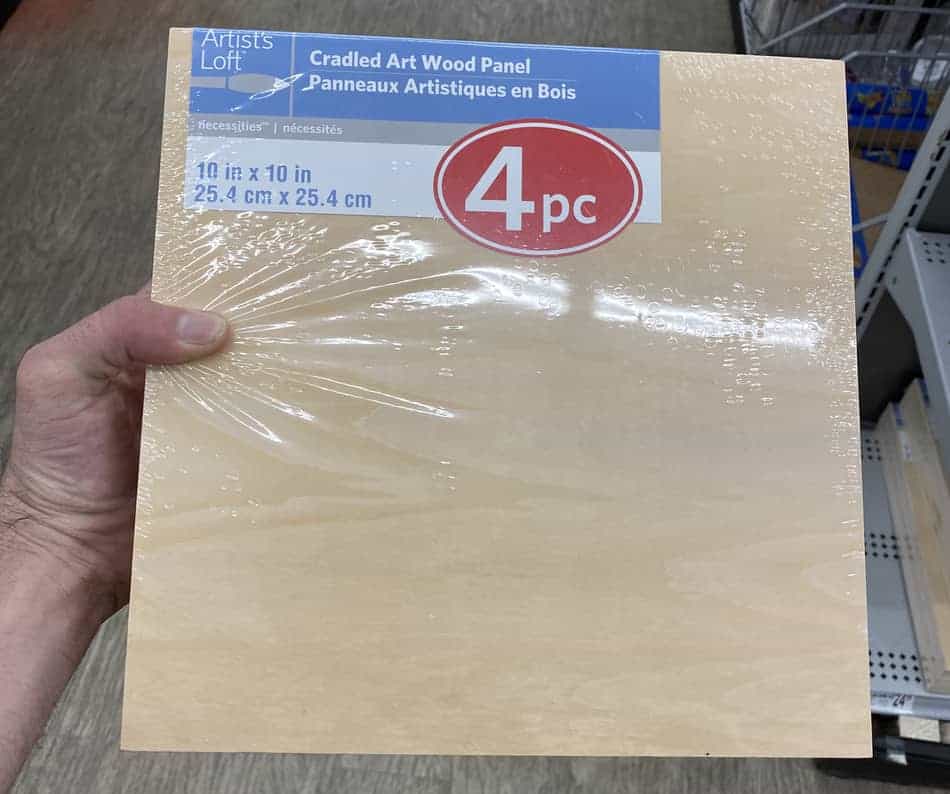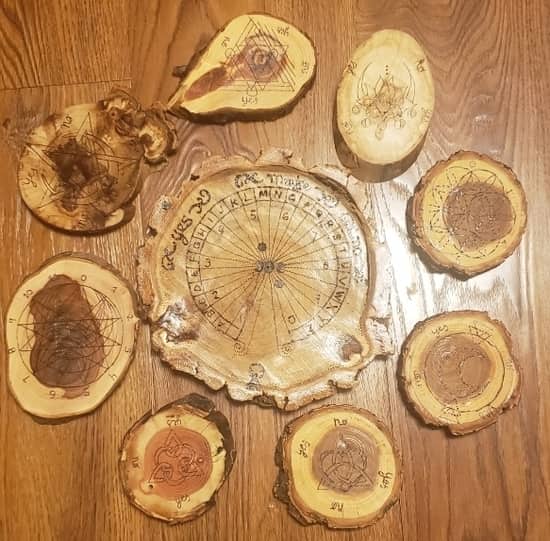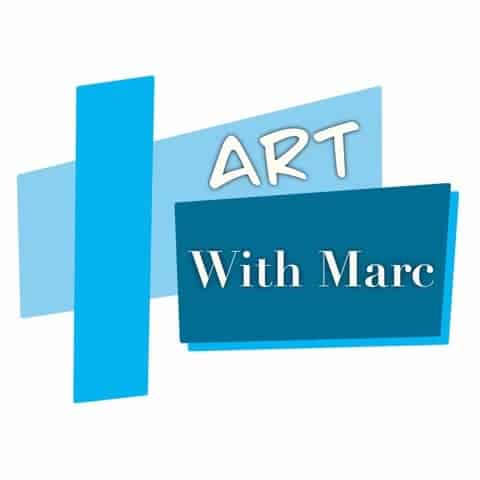
When it comes to buying wood for acrylic painting if you never have painted on wood before it can be a bit confusing. What exactly should you get? Is one type of wood better to paint on than another?
In this article, we are going to focus on helping you sort out all the different products available and why you might be interested in using them.
Before we get to the nitty-gritty details of the grain, let’s cover the various types of wood you can use acrylic paint on.
Wood for acrylic painting:
- Hardboard – A hardboard is made from different types of hardwood.
- Plywood or Wood Paneling – Hard plywood made of birch, oak, mahogany, or walnut.
- Wood Slices – Medallion slices of pine wood that still have bark around the edges.
- Wood Furniture – Things like wood tabletops and figurines.
Each of these types of wood can be purchased pre-prepped ready to paint on. For the more crafty woodworker out there one could even make their own panels or even wood slices!
It’s just a matter of knowing what types of wood you can use and how to properly prepare them for painting. For us beginners it is advisable to go for the wood products that are ready for use.
That said, once you know what types of wood are best for painting and how to properly prepare wood for painting, you can even paint on furniture or other wood objects you have!
Lets venture deeper into the forest!
Related Articles:
- How To Use Acrylic Paint On Wood: Prepping to Paint
- How To Paint Water (A Step By Step Guide) On a wood panel!
- What Can You Use Acrylic Paint On? 13 Surfaces To Paint On!
- Paper For Acrylic Painting (A CHEAP Alternative to Canvas!)
- Canvas for Acrylic Painting: The Beginners Quick Reference Guide
Using Wood For Acrylic Painting

There are many reasons to use wood for acrylic painting. Artists throughout history have painted some of the most famous paintings on wood.
The Mona Lisa, as an example, was painted on poplar wood! Leonardo da Vinci often used oak panels, walnut panels, and even poplar for his paintings.
This is part of the confusion when it comes to finding wood products to paint on. There are a large variety of options just in types of wood alone.
When you actually go look at products available there are a bunch of additional options on top of the types of wood they could be made of. In fact, most products I have looked at don’t even specify the type of wood it is made of or how it was made.
Ampersand is one brand that produces wood panel products. They offer a variety of products for different purposes.
Ampersand Clayboard is one of their products that can be used for acrylic painting but I haven’t been able to find any details on what exactly it is made of.
Is it wood? Is it Clay? Is it some combination of both? I really am uncertain at this point. It does boast that you can scratch through it to create contrast, texture, and finer details.
I’m not sure what that means in way of how it was actually made…
It seems that when you are purchasing wood panels from an art supply store that really all you need to worry about is whether it is primed or not. Almost all offered panels are good for acrylic painting with the exception of a select few.
Be sure to read what mediums they are good for. Some are meant for watercolor painting.
One thing you should definitely know about buying wood panels is they come in two basic forms. You can buy them as a flat sheet or panel or you can purchase them “cradled”.
When It comes cradled it basically comes in a framed way as if it were canvas. Thus making it easy to hang on the wall once it is completed.
So keep that in mind when shopping. Do you want to be able to hang it right away or do you like the flat panel look with a frame?
To be honest it is more important to know that little fact than it is the types of wood you can paint on when it comes to buying wood products specifically from art retail stores.
How they are made and what they are made of isn’t information often provided by the manufacturer.
They simply just assure you that the wood paneling that you’re buying is better for your paintings lifespan than canvas may be.
Canvas can sag and stretch over time. The right type of wood that is properly prepared can last centuries.
If you’re a more advanced artist who wants to pursue making their own wood panels, then in that case it is good to know all the type of hardwood you may be interested in using.
Wood Slices and Furniture

If I’m being honest, these two wood painting options are something that is pulling me in to try.
I don’t know what it is about wood slices that I find appealing but for some reason I really want to try painting on some. Maybe its the rustic look that the bark gives the edges. I’m not too sure.
They can be used to make little wooden medallion paintings. They have a rustic wooden feel to them to help spruce up your place a bit. (Pun totally intended!)
Some people even make cool little wood coasters out of them. There are plenty of neat pieces that can be made using wood slices.
Then there is furniture. I live in an apartment complex where there is almost always some really great piece of wood furniture being thrown out.
Well, maybe they aren’t GREAT great, but the artist in me sees them and thinks “I could grab that and turn it into an epic piece of art”.
If I did that and sold it my only costs would be the paint and gesso I use to complete the project. In fact, why in the heck haven’t I tried this yet?
Something like a table can be sold for much more than an average painting too. I’m curious how one would price that…?
Maybe a base price for the furniture itself then add to it what you would normally charge per square inch for a painting?
I’m sure there is some way to approach that which is reasonable. I think maybe it’s time I give this a try the next time there is something good to snag up.
Prepping Wood For Acrylic Painting

If you have something made of wood that you want to paint on, like perhaps a piece of furniture, it’s really a matter of properly prepping your wood before you start painting.
There may be some things you can do once your painting is completed as well to help preserve the painting and the furniture.
Up-cycling furniture is great fun and quite lucrative! So many people throw out perfectly good furniture all the time! Grab that free stuff, turn it into art, and make a killing!
This process would be similar no matter what wood product you might be interested in painting on. Whether its a table, a futon frame, or even some sort of figurine these simple steps should be used.
First off, when it comes to something like a tabletop, you will want to start by sanding it down to get rid of any elements that may prevent the primer from sticking.

This will help get rid of dirt or chemicals on the surface that may impact your next step of sealing the surface.
Next, prime it by using Gesso. You can get clear Gesso if you want the wood grain to show through or white Gesso if you don’t.
You will want to use at least two coats of Gesso to properly seal the surface and prevent the paint from soaking into the wood.
If this happens it can cause the wood to rot and decay over time. Getting a proper seal will help to avoid that and ensure the longevity of the piece.
That’s it! Sand it, prime it, then paint it to your heart’s content!
For a more detailed step by step on how to prep wood for acrylic painting check this more in-depth article with everything you need to know!

